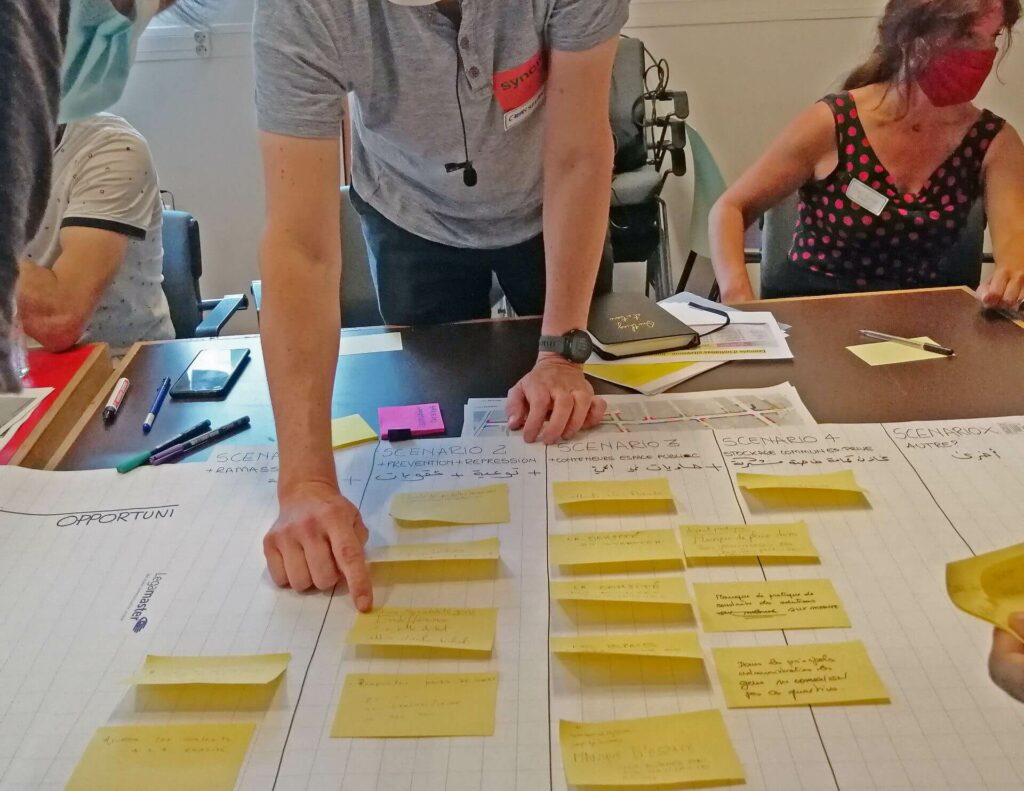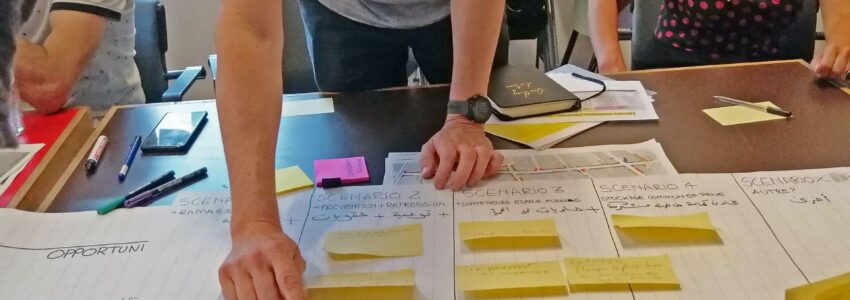09 Atelier scenario
A workshop involving end users of a service, product or urban planning project, to share opinions and collaborate on solving problems with the help of a facilitator. It is an effective tool for co-creating solutions with the people who are the most affected by an issue, regardless of their education and communication skills.
Develop scenarios for discussion
The first step is to define a set of scenarios with the help of urban planning / design experts. These scenarios suggest solutions to future problems, describing them in terms of social, technological and organisational arrangements. They provide a basis for discussion on how things might be, instead of definitive statements (Street, 1997).
Choose participants
Make sure that all stakeholders related to a certain urban transformation project or service / product design are represented in the workshop. Local associations might help with recruiting participants.
Hold the workshop
Participants scrutinize the scenarios and write their ideas and comments on posters or post-it notes. The best practice is to divide them into groups. While doing this you need to balance the various interests of different social groups (citizens, entrepreneurs, decision-makers, etc) in order to include them on an equal basis. You can either have each group reflect on a different scenario or have all groups focus on the same scenario. In the latter case, make several discussion rounds, until all the scenarios are covered. At the end, each group presents their findings to the whole audience to enable further discussion.
Benefits
It provides an opportunity for local stakeholders to affect the decision-making process. Their views and knowledge are incorporated in the design process. It helps adapting choices for a specific community while providing innovative hunches on aspects related to everyday uses and practices that could otherwise remain unknown.
Who is it for
Managers and end users of a service, product or urban / architectural project
How does it work
It engages participants in a reflection process on concrete urban challenges, enhaces mutual learning and the exchange of experiences and facilitates collaboration.
Why, what for
To engage different stakeholders, agree on a common language and converge towards a shared vision / strategy.
Who can do it and what do you need for it
Competences: a social scientist, a research assistant, a facilitator and a translator (if necessary)
Materials: flipcharts, post-its, pens, printed maps
At what phase in a planning process
In the phase aimed at creating solutions in a collaborative way with the affected stakeholders
Estimated budget
Mainly depending on the costs for renting a space
with several rooms for small group work
syncity Contact
Cataline Sénéchal, cataline.senechal(at)ieb.be,
Andrea Bortolotti, andrea.bortolotti(at)ulb.be

Further reading:
Sanders, Liz and Pieter J. Stappers. 2012. Convivial Toolbox: Generative Research for the Front End of Design. Amsterdam: BIS.
*
Slocum-Bradley, Nikki. 2003. Participatory Methods Toolkit: A Practitioner’s Manual. Brussels: Fondation Roi Baudouin.
*
Street, Penny. 1997. ‘Scenario Workshops: A Participatory Approach to Sustainable Urban Living?’ Futures 29(2): 139-158.

